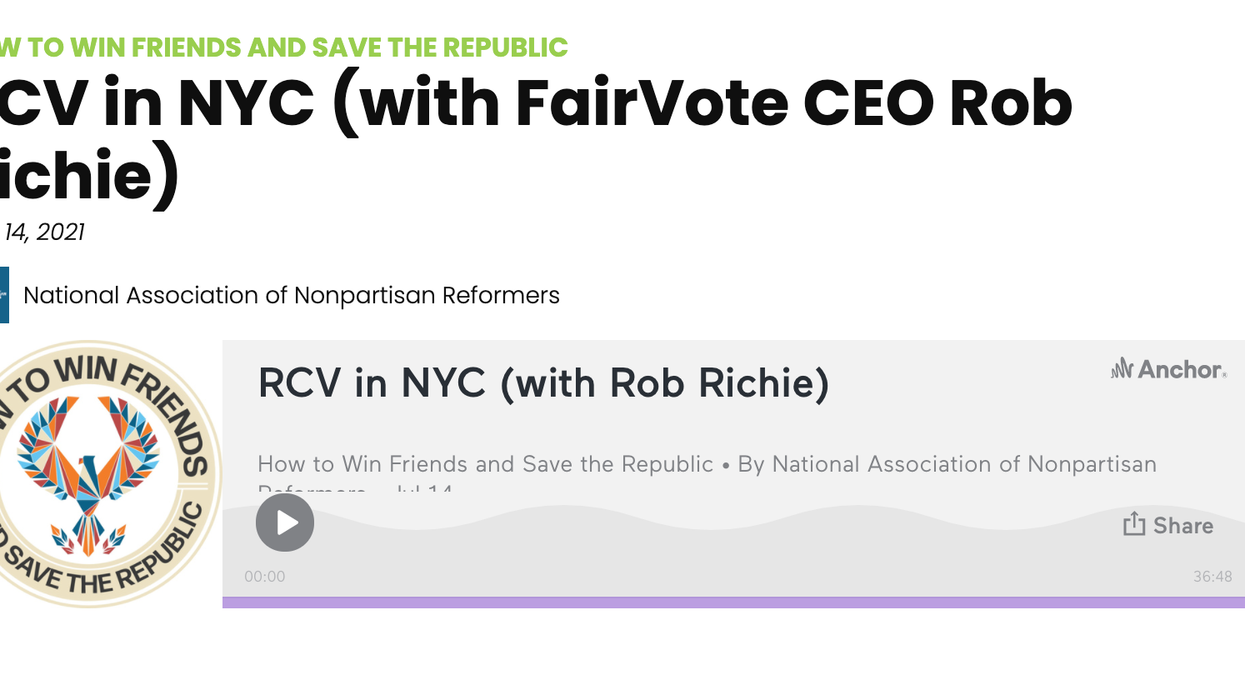In this edition of How to Win Friends and Save the Republic from the National Association of Nonpartisan Reformers, Rob Richie, CEO of FairVote, discusses his organization, where he finds his passion for democracy reform, and how Ranked Choice Voting faired in the Democratic primary for the New York City mayor's race.
Podcast: RCV in NYC with FairVote CEO Rob Richie




















